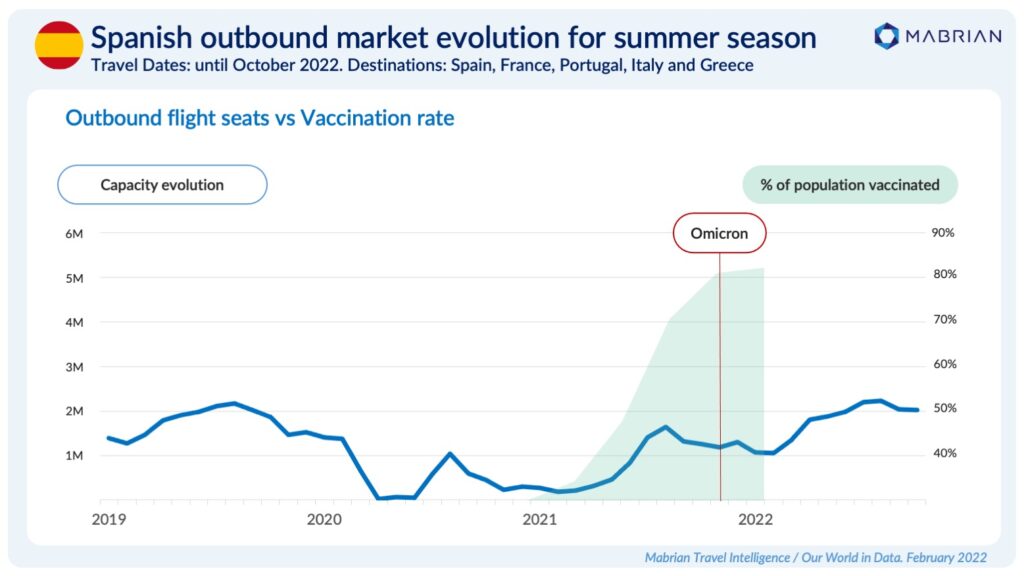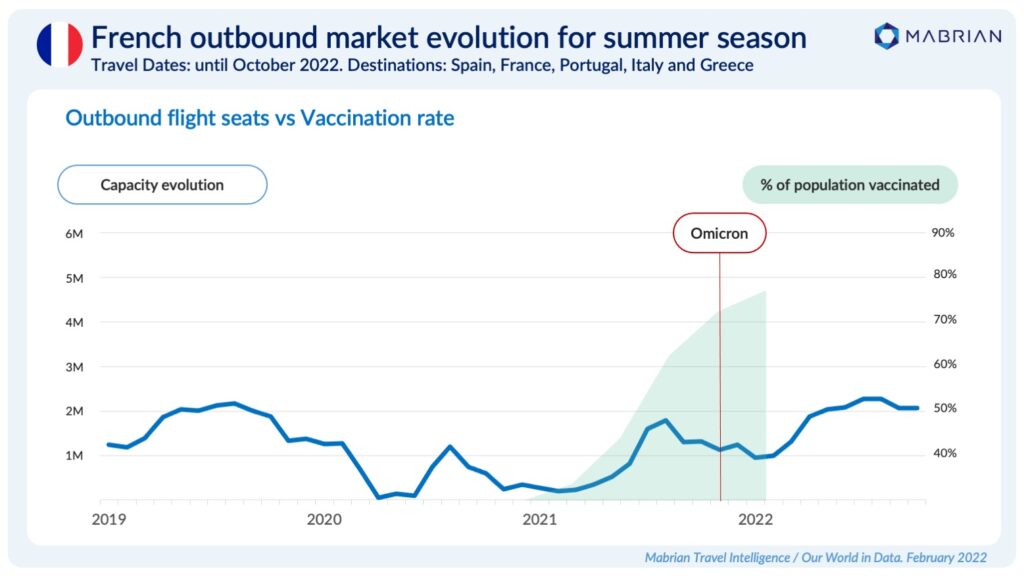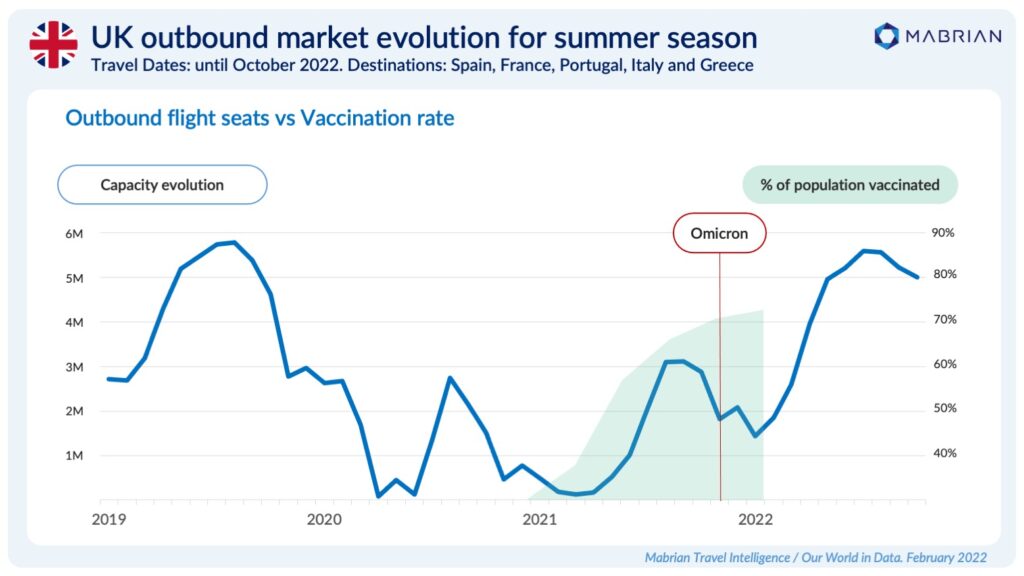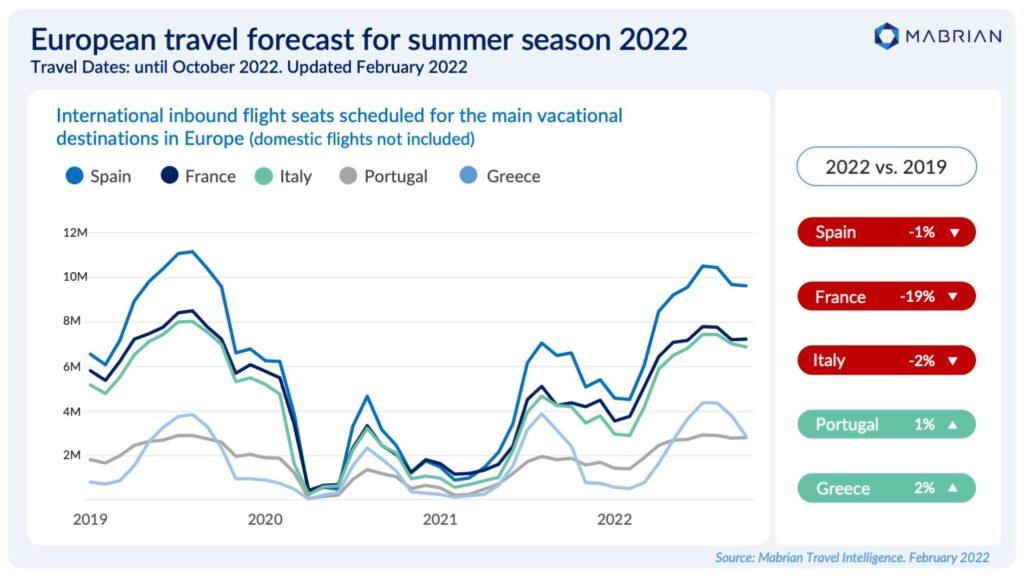
According to a new study published by Mabrian Technologies – the world’s leading provider of data analysis and tourism intelligence – as the most recent pandemic wave recedes, increasing vaccination rates and the number of people who have temporary immunity after infection will positively impact arrivals in the major European vacation destinations this summer.
The Mabrian research shows the association between Omicron, vaccination rates, and the outbound air capacity of the UK, Germany, France, Spain, and Italy to their most popular overseas vacation locations. Portugal and Greece are already at +1 percent and +2% of their 2019 air capacity, respectively, for the period 1 May to 30 October 2022. Spain and Italy, on the other hand, are only down 1% and 2%, respectively. France is the lone exception, with a decrease of 19% from 2019, but achieved an absolute total that is almost double the 2021 figure.






Carlos Cendra, Director of Sales & Marketing at Mabrian, comments: “How could it be possible that something as nasty as Omicron has accelerated the recovery of tourism? Essentially Omicron pushed many more people to become fully vaccinated and our research shows that all the main outbound markets for European holidays have seen quite significant jumps in vaccination rates during that time. At the same time, many more people have now been infected than before, or have had their third dose, giving them temporary confidence that they can travel. Therefore, it would be quite hard to argue that, right now at least looking forward to the summer season, we’d have been better off without Omicron.
What’s the evidence for this driving a recovery in tourism though you might ask? After all, at first glance the capacity figures fall sharply around the time of Omicron, despite vaccinations going up? Well when you consider that in the winter months capacity always falls substantially for seasonal destinations such as Spain, Italy, Portugal, Greece and France, then actually in recent months the capacity evolution hasn’t varied from a ’normal’ years. In other words, Omicron didn’t impact them.
Perhaps this will be an eternal debate amongst academics as to Omicron’s impact on the tourism economy, and evidently without the vaccines then Omicron would have been a terrible health tragedy for the whole world. But one thing is for sure: based on current scheduled capacity, inbound international arrivals the main European destinations are essentially back up to 2019 levels. This is simply fantastic news, unthinkable only a few months ago. Better news still is the fact that there is no indication that the demand for domestic travel is falling across Europe, meaning that overall destinations could see themselves entering into overall visitors figures and occupancy rates higher than before the pandemic.”
These insights, according to Mabrian, are critical for any destination contemplating where to focus their marketing spend right now: high vaccination markets should be the first priority, as the correlation between vaccines and recovery is undeniable. Mabrian believes that destinations can take some comfort from the fact that increased vaccination rates will drive the recovery of their destination over the longer term
Source: Mabrian
